This blog is meant to show how much ancient humans were just like humans today through art. Profile picture and header taken from the Wikimedia Commons Definitions of words and phrases used on this blog. View posts in chronological order.
Don't wanna be here? Send us removal request.
Text
A Very Good Video
The inspiration behind this blog, and my interest in archaeology in general can be traced back to this beautiful animated by Kurzgesagt, and narrated by John Green. I hope you are able to get out of this video what I did.
youtube
0 notes
Text
Terms and Timelines in Archaeology
I probably should have posted this first, but after looking back at some of my posts I figured that it might help to have a short list of the vocal and timelines used in Archaeology, and therefore this blog.
Lithic - From Greek for stone, in archaeology it refers to a tool being made of stone, or in reference to a culture for the era in which it only has access to stone tools, simple or composite, often split into two main eras.
Composite tools - a tool made of one or more material.
Paleolithic - (literally ancient stone), it refers to the earliest use of stones as tools by humans, even including Homo erectus, to as late as relatively advanced knowledge of stone carving techniques, shown with a handful of sculptures made during this time period.
Neolithic - (literally new stone), refers to an era where a culture begins to rely primarily on domesticated food sources, frequent and widespread use of ceramics, to the beginnings of metallurgy, which directly leads to the Bronze Age.
Bronze Age- while popularly used to signify the pride of history from Mesopotamia to the early Greek people, it now has a different time period for most cultures, and similar to the paleo and neolithic, refers to a stage in a cultures technological development where they harness copper and bronze.
Iron Age - Same as before, an era of technological development in a culture where they begin to use tools made of iron.
Ancient history - After their Iron Age, most cultures begin to record much of their culture, entering recorded history, and many western cultures from history in popular culture were at their peak in this time period, such as the Egyptians, the Greeks, and the Romans.
Venus Figurine - A figurine modeled after the female body, frequently with selective exaggerations of the breasts, belly, and vulva.
Cave Art - Art painted with the mineral ochre onto the walls of caves, likely painted by blowing through a hollow bone.
142 notes
·
View notes
Text
Cave Art and Artistic Expression at a Similar Level of Technology
Given how the name of this blog references cave art, it seems appropriate I actually make a post about them. I found this great article by Barbra Ehrenreich on cave art and lithic art in general.
Cave art
The most famous cave art would be located in Lascaux, France, and though the public is now barred from the original cave, what we see in it is still mesmerizing. The vast majority of the cave is covered in depictions of animals; bulls, birds and extinct megafauna litter swaths of the cave.
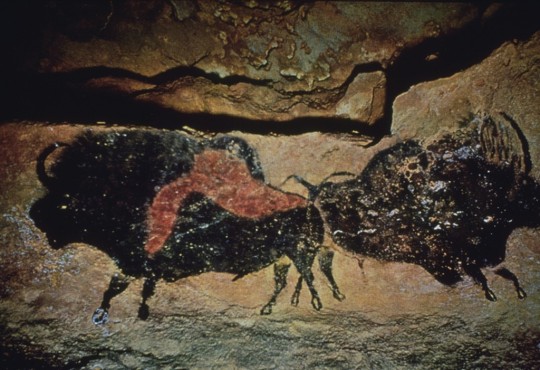
(ca. 15,000-13,000 B.C.E.). Bison molting, detail of mural from the caves at Lascaux. Retrieved from https://library.artstor.org/asset/AIC_940022
Of what relatively few depictions of humans exist in the cave, they curiously lack faces and rather crudely depicted. Many of these depictions seem to be animal-human fusions as well, famously there is a bird-headed man with what seems ton be an erection (seen below)

© Traumrune / Wikimedia Commons
Despite the drawings seeming similar to something doodled in the margins of a bored schoolchild's notebook, seeing the art painted upon the walls of caves by our lithic ancestors had a profound effect on artists of the 20th Century, in 1928, after visiting the Les Eyzies caves, the artist and critic Amédée Ozenfant wrote, “Ah, those hands! Those silhouettes of hands, spread out and stencilled on an ochre ground! Go and see them. I promise you the most intense emotion you have ever experienced.” It's said that Pablo Picasso, after seeing the art of the Altamira cave of Spain in 1934 he exclaimed, “Beyond Altamira, all is decadence." Jackson Pollock even left his handprint on at least two of his works in tribute to the cave art he saw. Given how profoundly seeing this ancient art affected these famous artists, you might be curious as to what the art adorning these caves means. If you are, then you are in the same predicament as modern archaeologists.
Artistic Meaning
The lack of detail in the illustrations of people is rather strange. Venus figurines, some dated to even before certain sites of cave art, have relatively detailed forms, frequently depicting clear (if extremely exaggerated) human bodies and limbs.
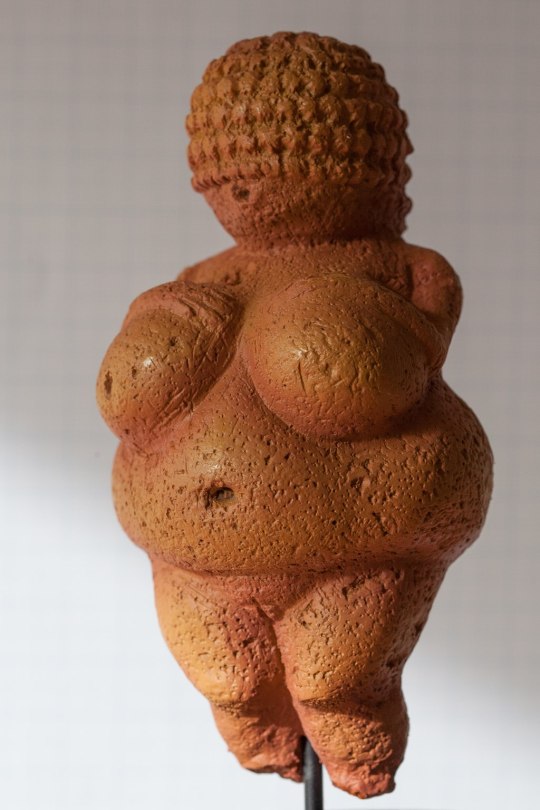
A picture of the Venus of Willendorph, note the details of fingers on the hands, textured hair, what appear to be pursed lips, and a simple depiction of the vulva. photographer User:Thirunavukkarasye-Raveendran, CC0, via Wikimedia Commons
The exclusion of these details from the people adorning the walls and ceilings of caves is curious, as there is a precedent for including and exaggerating human features in art, but this and some other factors lead many to believe the art in the caves held some sort of religious or ritual importance to the people who painted them.
While there is a variety of animals painted in these caves, most do not depict what would be the primary source of meat for these people. Hinting at some significance towards these animals, or that depictions would be painted in celebration of one being successfully hunted down. Some paintings, when viewed lit by a flickering fire, seem to run as if they were living in the walls of the cave. Other paintings depict herds of animals traveling between pastures, some of them with stick figures representing people throwing spears, completing a successful hunt. A few paintings merely depict now extinct megafauna, or the animal-human fusions referenced earlier. Given the sheer variety of what is depicted on top of the rock within these time capsules of our earliest art, it is difficult to glean any meaning from it. The paintings seem erratically spread out, with some areas of the cave barren while others are layered with outlines of human hands.
Why Even Care?
The intended meanings of this art may be lost to time, but what matters is what it means to us today. What matters the most is that it is seen, even if it can only be done through reproductions, and that you are able to find some meaning in it. Maybe that art is intrinsically human, drawing detailed people on a flat plane while avoiding the uncanny valley is difficult, or just seeing a bird man with a boner is funny to you, these all have the same significance that today's art has. The overwhelming madness in Goya's Saturn Devouring His Son, The haunting regret of a father in Repin's Ivan the Terrible and His Son Ivan, or any emotion you can glean from a Jackson Pollock painting. All art is meant to convey some idea or emotion, no matter if it was painted by an acclaimed artist, or by a simple hunter-gatherer, using what time not spent surviving to express themselves.
Source: https://www.theguardian.com/artanddesign/2019/dec/12/humans-were-not-centre-stage-ancient-cave-art-painting-lascaux-chauvet-altamira
4 notes
·
View notes
Text
Lithic Instruments
As any know-it-all would tell you the oldest instrument is the human voice, but given that its difficult for someone to play someone else’s vocal cords, archaeologists concern themselves more with man-made instruments. Some of the earliest known instruments are bone flutes.
Bone Flutes
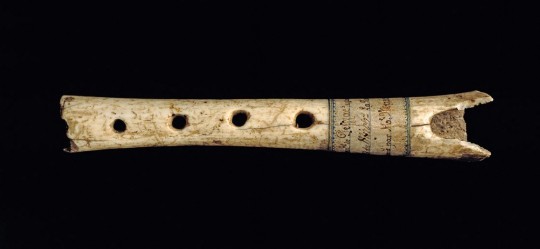
(c. 30,000 BCE (age is uncertain)). Flute, with five holes on the front and two on the back. [musical instrument]. Retrieved from https://library.artstor.org/asset/LESSING_ART_1031388057
Bone flutes would be played with one end within the mouth and one hand covering and uncovering the holes to play different notes, similar to a recorder. Unlike a recorder, the end of a bone flute can be covered for additional range in tones. An example of a bone flute being played can be seen below:
youtube
It is likely that such instruments would be played for celebrations of a very successful hunt or a victorious combat over resources or hunting areas, rituals to bring in more rain for better harvests of berries or crops, or simply played around the fire for everyone in the tribe to listen and dance to.
Drums
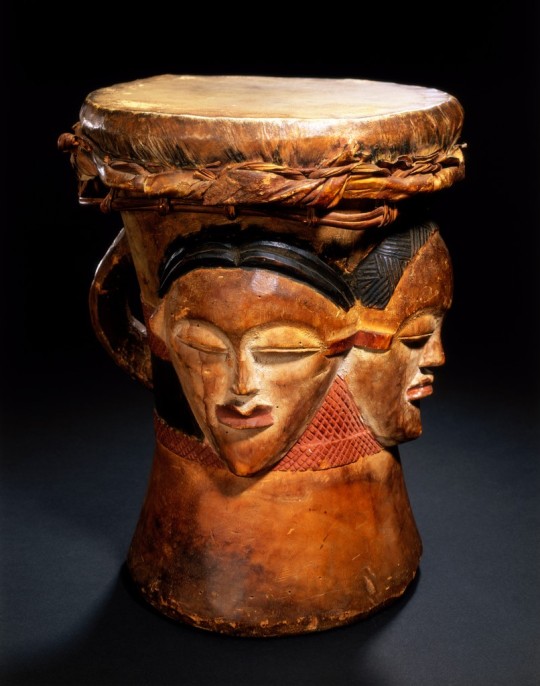
Drum. Retrieved from https://library.artstor.org/asset/AFOWLERIG_10313206625
Drums are difficult to place in the history of instruments given how hard it is for one to be properly preserved. Even modern drums are mostly made out of materials that degrade rather easily, such as hide, wood and ferrous metals. Drums from a Stone Age society have an even less likely chance of surviving any amount of time without regular maintenance, but given their prevalence in isolated Stone Age tribes all over the world, it is likely that they existed alongside bone flutes and the next instrument we will discuss.
Horns and Trumpets
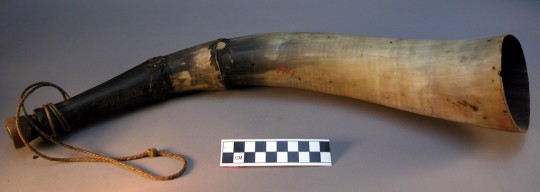
Cow horn instrument. [Tools, Musical, Woodwind]. Retrieved from https://library.artstor.org/asset/AHARVARDIG_10313862982
The earliest horns are made from animal horns. Such as the horns of a goat or a bull, played similar to today’s horns and sound similar as well. Below is an example of a kudu horn being played by a Zulu warrior in South Africa.
youtube
Recently, Archaeologists reconstructed a conch horn found in the Marsoulas Cave in Southern France. The horn was originally made by removing the closed, curled in tip of the shell, and some resin or wax would be used to affix a mouthpiece to the new opening or a perforation towards the close end would be made. The labrum (outer lip) of the shell would also be removed. An unmodified conch shell:
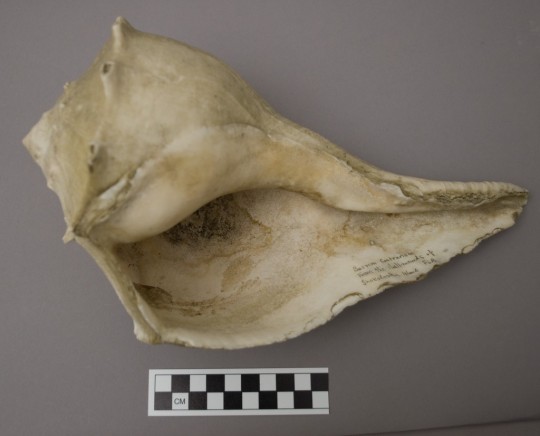
Recently, Archaeologists reconstructed a conch horn found in the Marsoulas Cave in Southern France. The horn was originally made by removing the closed, curled in tip of the shell, and some resin or wax would be used to affix a mouthpiece to the new opening or a perforation towards the close end would be made. The labrum (outer lip) of the shell would also be removed.
An unmodified conch shell:
Conch, Busycon contrarium. [Organic, Shell]. Retrieved from https://library.artstor.org/asset/AWSS35953_35953_38732033
A modified conch shell (though different origin species), note the perforations and removed labrum:
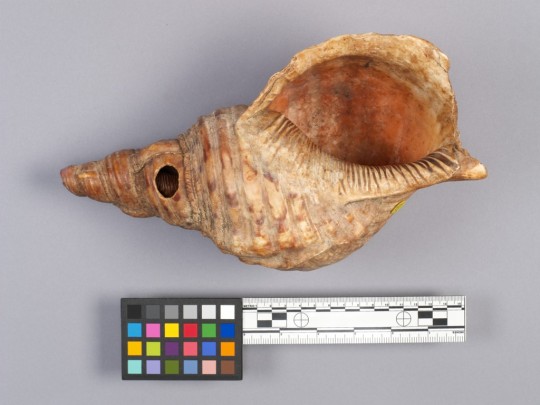
(Image: 20-Dec-2006). Horn, Ie473 Side One. Retrieved from https://library.artstor.org/asset/AWSS35953_35953_38251381
The scientists even recorded a sample of the reconstructed instrument being played:
Source: https://www.npr.org/2021/02/10/966322717/why-a-musician-breathed-new-life-into-a-17-000-year-old-conch-shell-horn
Given how similar most of these instruments sound to what we hear played at concerts today, its not too far off to imagine that thousands of years ago, families would gather around the fire to listen to their musicians craft, the same way we do today.
3 notes
·
View notes
Text
First post!
Hey all! This is caves-to-canvas, a blog started for the sole purpose of a final assignment. As a first post, I figured I would just do a quick article I found browsing reddit!
Ceramic Mayan Figures Found at El Perú-Waka, Guatemala
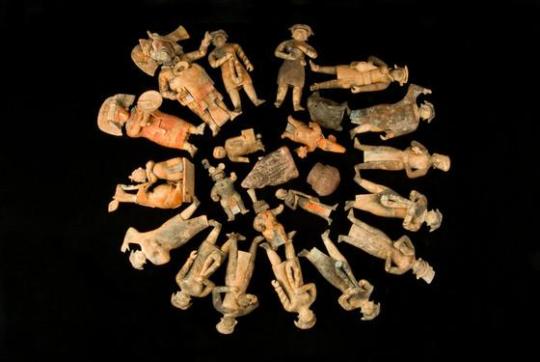
The 23 figures from the site, photo © Ricky Lopez
The figures, seen above, date back to 600-650 CE. While not what most of us would consider lithic (Stone Age) art, given how late complex societies emerged in the Americas (The first known being the Olmecs, who emerged ~1500 BCE, and while still being a hunter-gatherer society), very few societies in the Americas were able to use metals in tool production pre-Columbian. This places the vast majority of Native American cultures in their Stone Age. What should be kept in mind, is that their tools being stone-based is no reason to doubt their intrinsic humanity.
Significance of the figures
The figures were most likely made to depict what ritual life for the Maya people. One figure depicts a dead king, with a magical deer that guides him through the underworld until he reincarnates.
Other figures depict living rulers of the Maya, a king and queen, adorned in clothing with vivid colors and multi-layered textiles, Dancers, Scribes, and an Heir to the throne, all joined by a female shaman depicted mid-howl.
The most important figure to this blog though, is one of a dwarf boxer equipped with a conch shell trumpet, to both play music and open a path to the underworld.
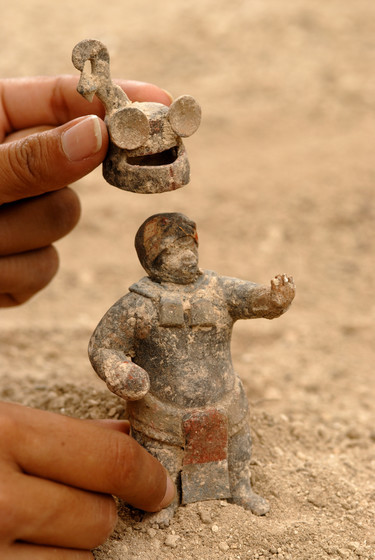
photo © Ricky Lopez
Of particular interest to this blog is how this figure has a removable helmet, effectively functioning as an accessory similar to modern dolls and action figures. While this figure and the others found at El Perú-Waka likely hold a greater significance than today’s toys, the idea to have a noticeable part of a figure designed to be easily removable and replaceable goes to show how human innovation never really changes, just the tools available and the medium used.
Source: https://unframed.lacma.org/2017/09/21/archaeology-el-ú-waka’-maya-ritual-resurrection-scene-broader-perspective
8 notes
·
View notes